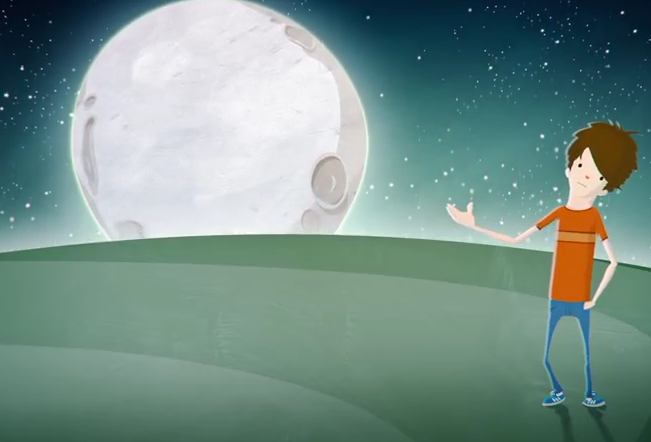Have you ever noticed how the full moon looks bigger when it's near the horizon than when it's high over head?
你注意到了嗎?滿月在接近地平線時比高掛空中時看起來大一些。
If so, you're not alone.
如果你注意到了,你就不孤獨了。
People have wondered about this strange effect since ancient times, and surprisingly, we still don't have a great explanation, but that's not for lack of trying.
人們長久以來對這個奇怪現象驚奇不已,令人驚訝的是,我們仍然沒有一個完美解釋,但這不是因為我們沒有努力去尋找解釋。
Some of the greatest minds in history, Aristotle, Ptolemy, Da Vinci, Decartes, have all wrestled with this problem and failed to generate an adequate explanation.
歷史上的一些偉人,如亞里士多德、托勒密、達芬奇笛卡爾,都曾試過解釋這個問題,卻都鎩羽而歸。
One of the first ideas suggested was that the image of the moon in the sky really is bigger near the horizon.
最初的一種觀點是月亮在空中時成的像確實比接近地平線時大一些。
Perhaps the Earth's atmosphere acts like a giant lens, magnifying the moon as it rises and sets.
或許地球的大氣層就像一面巨大透鏡,在月亮升起和降落時放大它的圖像。
But this explanation doesn't cut it.
但是這個解釋并不合理。

If anything, the refraction of the atmosphere would make the moon look slightly smaller.
如果真有大氣層折射,它應該是讓月亮看起來小一點兒。
Plus, if you actually measure the size of the visible moon at different positions, it doesn't change at all.
而且,如果你真的在不同地點測量月亮可見部分的尺寸,會發現它沒有變化。
But then, why does it still seem bigger when it's rising?
那么,為什么月亮升起時會顯得大一些呢?
This must be some kind of optical illusion.
這一定是某種視錯覺。
The question is, which one?
問題是,是哪一種視錯覺?
One explanation is the Ebbinghaus Illusion, where two identical objects look different because of the relative size of the objects they're surrounded by.
一種解釋是艾賓浩斯錯覺,即兩個相同的物體會因為它們與周圍物體的相對尺寸而顯得不一樣大。
Here the two center circles are actually the same size.
這兩個中心圓事實上一樣大。
Maybe the moon looks bigger near the horizon because it's next to tiny trees, houses, and towers in the distance.
或許月亮在接近地面時顯得大是因為它附近有小樹、房子和遠處的塔樓。
But when the moon is higher up, it's surrounded by the vast darkness of the night sky and looks tiny by comparison.
而當月亮在高空中時,它被茫茫黑夜環繞,所以相對來說顯得小了。
Another possibility is the famous Ponzo Illusion.
另一種解釋是著名的龐佐錯覺。
If you've ever tried to draw in perspective, you know that the closer something is to the horizon, the smaller you should draw it.
如果你曾經試過透視畫法就會知道,一樣東西越靠近地平線就該畫得越小。
Our brain compensates automatically for this by perceiving objects near the horizon as larger than they actually appear.
我們的大腦自動彌補了這樣的透視效果,使得地平線附近的物體在我們腦海中的形象比實際更大。
The two yellow lines in this drawing are the same size, but the upper one seems bigger because we interpret it as receding farther into the horizon.
這幅畫里兩條黃線是一樣的尺寸,但上面那一條看起來更長,因為我們覺得它更接近地平線,所以應該比畫里面顯得更長。
So, between Ponzo and Ebbinghaus, it seems like we've solved the mystery of the moon illusion, but, unfortunately, there are a few details that complicate things.
那么,通過龐佐和艾賓浩斯錯覺,我們似乎解決了這個月球錯覺的問題,但不幸的是,還有一些細節讓事情不那么簡單。











